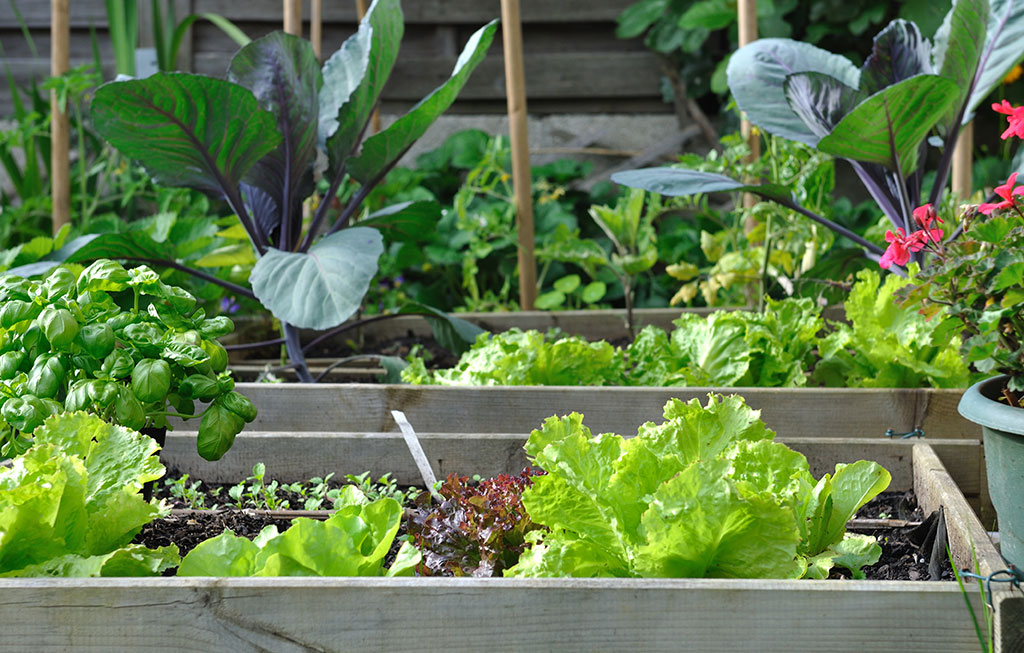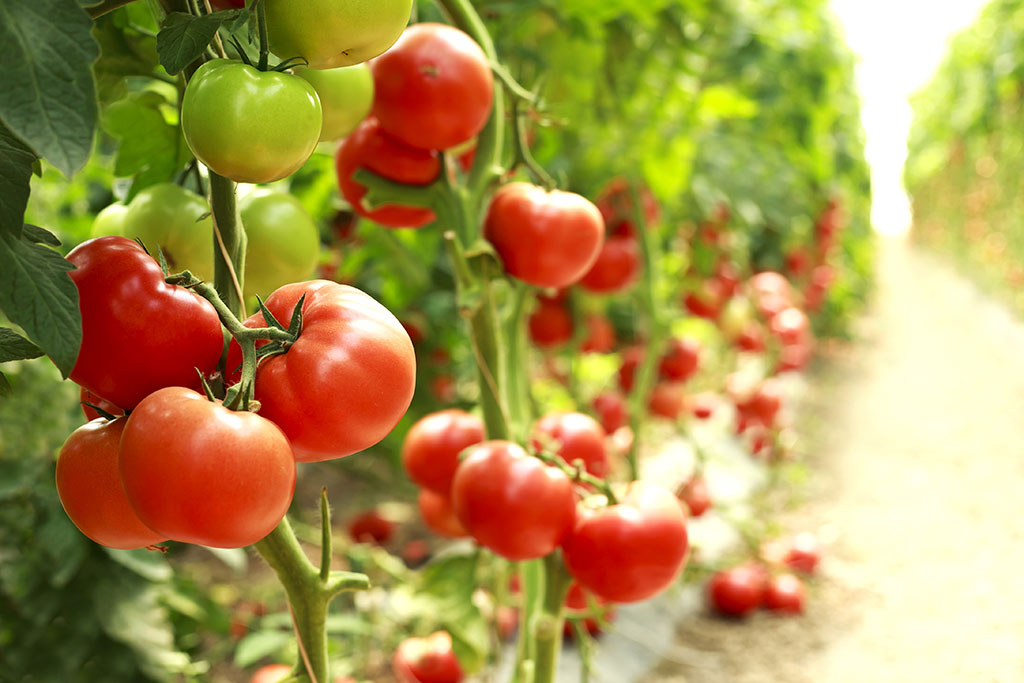Nothing beats the taste of freshly picked vegetables from your own garden. Read on for detailed information on choosing the right location for planting a vegetable garden, as well as a step-by-step guide on how to do it right.

If planned correctly, you can enjoy fresh lettuce from your own vegetable patch every day
Planting a vegetable patch is a lot simpler than you might think! So do not be afraid to give it a go even if you are a beginner. In this article, we cover all of the most important factors (location and a little planning) to help ensure that your vegetable garden is a huge success.
Sun and weather exposureMost vegetables thrive in the sun. So make sure your vegetable patch is set up far enough away from large trees and shrubs to ensure that the plants get enough light. It is also important that you choose a spot that is not overly exposed to the wind. That way your plants will be protected from strong winds while still benefiting from good air circulation. This is important because it allows plants to dry out faster after rain, reducing the likelihood of fungal diseases.
Soil qualitySoil quality is a very important aspect to consider for a healthy bed. Ideally, you will need loose soil that is rich in humus, has enough nutrients and is not prone to waterlogging. Carry out a soil analysis to find out which nutrients are already in your soil. If the soil is heavy and loamy, add sand and compost to improve its structure. If the soil is too sandy, add some compost to enrich it.
AccessibilityThe last point to consider before creating the new bed is accessibility. Set it up close to the water supply and compost heap to avoid unnecessarily long walks with heavy loads when tending the beds.

.

How to turn a lawn into a vegetable garden

Infiltration ditchesThe use of infiltration ditches is a tried and true method for digging vegetable beds. Divide the plot into smaller strips about 60 cm in width. Start by cutting out the sod of the first strip and setting it aside. Next dig out a ditch that is roughly as deep as the blade of the spade and set aside the soil with the sod. Now cut out the sod from the next strip, turn it over, chop it up and place it into the first ditch. Fill the first ditch with the excavated soil from the second ditch. Repeat this cycle until you reach the last strip of the bed. Fill the last strip with the sod and soil from the first strip.
Once completed, leave the soil to settle for a week or two before sowing and planting. As it can take a couple of years for the sod to rot completely, either dig deep ditches if you want to plant deep rooting vegetables or choose more shallow rooting vegetables in the meantime.
You can save considerable time and effort by using a rotary tiller or power hoe. These can be easily borrowed or hired from a local gardening club or gardening centre.
When is the best time to start a vegetable garden
Autumn and spring are the best times to start planting a vegetable garden. Each season has its advantages and disadvantages.
In autumn, for example, the frost will work to your advantage by helping to decompose any compact chunks of soil into a fine crumbly soil. The disadvantage, however, is that the valuable soil organisms that are inevitably brought up to the surface by digging will not be protected from frost.

Create a plan for the vegetable patch
For your planting plan, you will need to decide which vegetables you want to eat and how many you want to grow. Based on that, you can estimate how much space each plant will need.

.

Step-by-step guide on planting a vegetable garden
- Location: sunny, protected from the wind and easy to reach
- Bed dimensions: roughly 1.2 m wide
- Dig up the area in autumn or spring
- Improve soil with suitable potting soil or garden compost
- Draw up a planting plan
- Sow your vegetables directly or start them in seed trays
Which soil to use when planting a vegetable patch
Using the right soil will significantly improve the soil structure and nutrient content of your vegetable bed. Our Plantura Organic Tomato & Vegetable Compost for example, is ideal for growing tomatoes (Solanum lycopersicum), courgettes (Cucurbita pepo) and chillies (Capsicum). This organic tomato & vegetable compost is made entirely of natural raw materials and does not contain any peat. It promotes healthy plant growth and a bountiful harvest.

video: